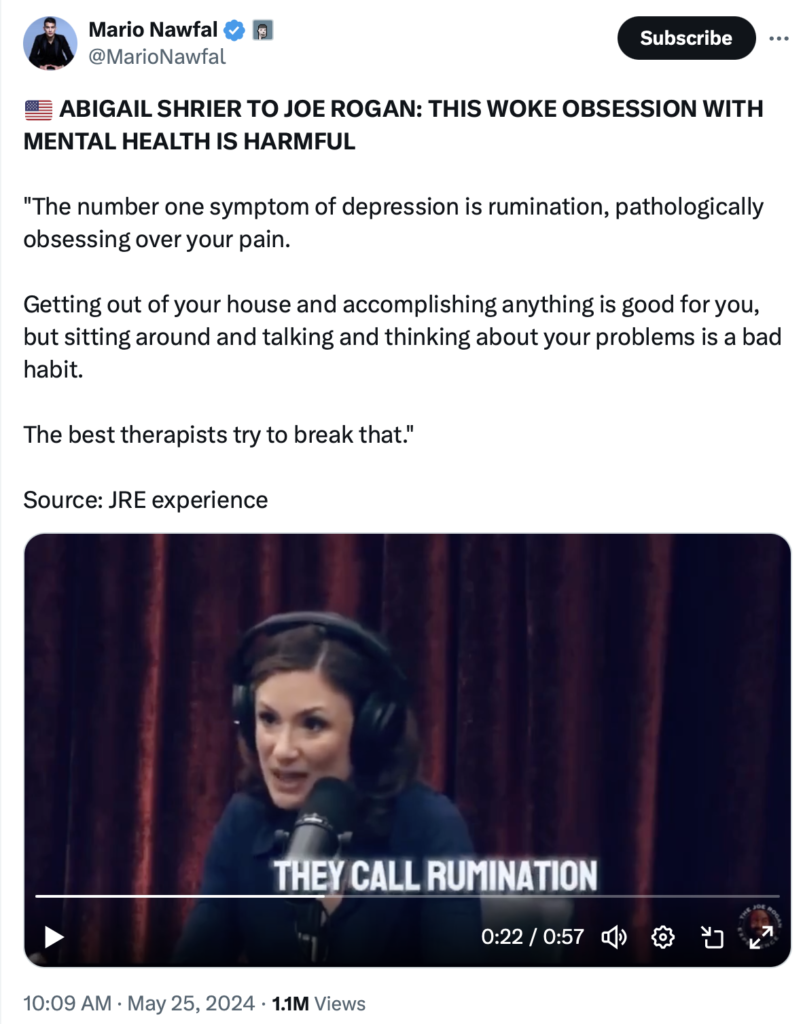Video Synopsis of Jonathan Haidt’s Newest Book: “The Anxious Generation”
Jonathan Haidt's newest book, The Anxious Generation, is out. I bought a copy but haven't read it (though I've watched several interview of Haidt and he makes a compelling case). The statistics are sobering:
Here's a 7-minute video synopsis of Haidt's book to whet your appetite:
Robert F. Kennedy’s Surrender Strategy for Beating Addiction
Atheists like me can enjoy uplifting religious messages like this one by Robert F. Kennedy, Jr:
Celebrating Independence, American Style
Celebrating Independence, American Style.
I looked up the annual tally. About 10-20 people die of fireworks each Fourth and there are about 10,000 hospitalizations. Launching fireworks is much more hazardous than, say, eating turkey.
Train Your Brain to be Disciplined by Telling Yourself “No” Many Times per Day
Dr. Andrew Huberman is a Professor of Neurobiology at Stanford University. In this video conversation with Shane Parrish, he suggests an exercise for controlling your impulses and keeping yourself focused. He describes two directional pathways that are triggered off of circuitry in the basal ganglia. One is the "Go" or action-oriented pathways the includes thought and the other is "No-Go." As kids, we are forced to engage in a lot of "No-Go" behaviors, including sitting still and not interrupting.
Our phones and other aspects of our environment cause us to shift our attention repeatedly. We are no longer children, so we don't have parents telling us "no" "no" "no." We tend to be action-oriented, "Go-Oriented," and we need to exercise our ability to resist impulses (to NOT check our phones and emails, for instance) in order to do deep focus for periods of 90-minutes with "tunnel-vision," resisting all distractions to get up and get away from the target of your focus. Huberman suggests several ninety-minute tunnel-vision sessions each day for productivity. How do we get better at this?
Hubeman suggests practicing "No-Go" moments:
One thing that I've done over the years to try and reinforce these circuits in myself based on my understanding of how they work is every day I try and have somewhere between 20 and 30 No-Goes and the No-Goes can be trivial like i'm ready to pick up my phone --NO!--and I force myself to not pick it up. All i'm doing is trying to reinforce that circuit, because the thing to understand about neural circuitry is that it's generic. It's not designed so that you have a strong No-Go response--just to picking up your phone--it actually carries over to multiple other things. At any moment we can be back on our heels flat-footed or forward center of mass. That's the way I try and visualize the waking portions of my life.
Most of our life is Go Go Go, starting at the moment we wake up.
We rarely rehearse our No-Go functions. No-Go functions are simply about suppressing behavior. So if you have a meditative practice there's a little bit of that, where you think i don't want to do it but i'm going to force myself to sit still even though I want to get up. That's a no-go, but think about it: If you get better at meditating, you actually have less of an opportunity to get into this No-Go mode to trigger the circuitry. So what I try and do is introduce 20 or so No-Go's throughout the day that I deliberately impose on myself as I'm about to get into reflexive action. It could be delaying a bite of food for a couple of minutes. I realize it sounds almost like an eating disorder, people with eating disorders probably want to stay away from that one--but there are all sorts of ways that we can do this. We find ways that we are are short-circuiting this process. I think we need to keep these No-Go circuits trained up. I think nowadays there's so much opportunity and so much reward for Go that we don't train the No-Go pathways.
- 1
- 2
- 3
- 4
- …
- 8
- Go to the next page





